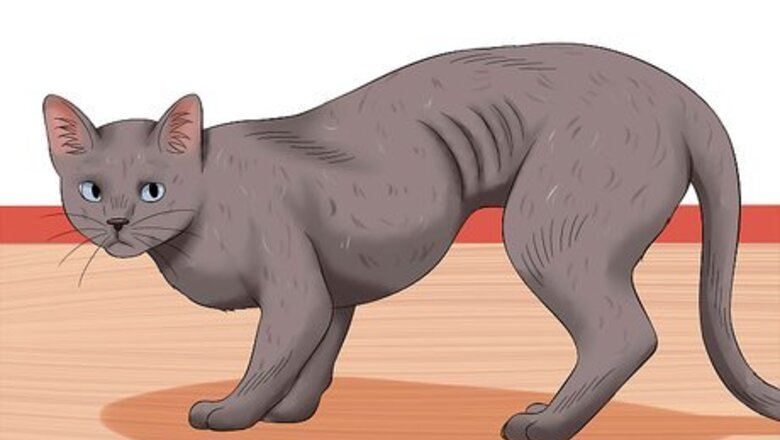
views
X
Research source
However, cats who live with us can also become malnourished if they do not eat enough food or eat the wrong types of food.[2]
X
Research source
If your cat is not looking too good and you're worried that she is malnourished, she will need your help to get better.
Monitoring Your Cat's Health and Nutrition
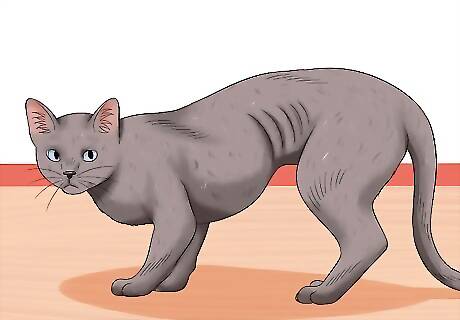
Recognize the signs of malnourishment in your cat. Although cats can be clever when it comes to concealing illness, your cat will probably not be able to hide her malnourishment. Signs to look for include dry and scaly skin, muscle weakness, and runny or hard feces. She may also stop grooming, feel fatigued, and become very skinny. Malnutrition can cause neurologic signs in cats. For example, a vitamin B1 deficiency can cause a cat to have a head tilt, become uncoordinated, and possibly have seizures.
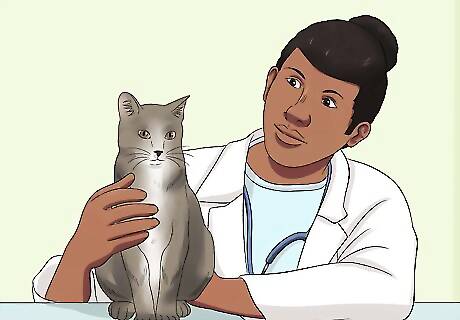
Take your cat to your veterinarian. Malnutrition is a serious disease in cats that can lead to other serious medical conditions. If your cat is showing signs of malnutrition, take her to your veterinarian. Your veterinarian will examine her physical condition and perform other diagnostic tests, such as blood work and urinalysis, to determine the severity of the malnutrition. Diagnostic test results can also reveal if your cat is suffering from other malnutrition-related diseases, such as hepatic lipidosis (fatty liver disease). After the examination, your veterinarian will be able to provide you with a treatment plan. Be aware that your veterinarian may recommend that your cat be hospitalized if the malnutrition is severe. Your veterinarian may recommend dietary supplements, such as vitamin B12 injections.
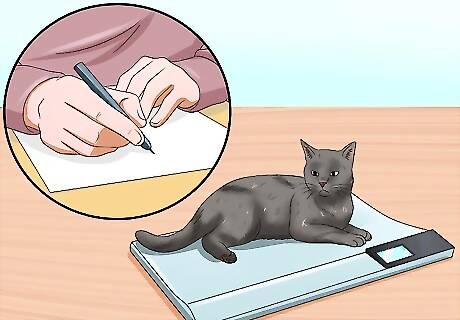
Weigh your cat regularly. Weighing your cat on a regular basis can help you to see if he or she is gaining weight or not. Try to weigh your cat about once per week to see if he or she is gaining weight. To weigh your cat, step on a scale while holding your cat. Observe the weight and write it down. Then, put your cat down and step on the scale again by yourself. Write this number down as well. Next, subtract the higher weight (while holding the cat) from the lower weight (not holding the cat) to find out how much your cat weighs.
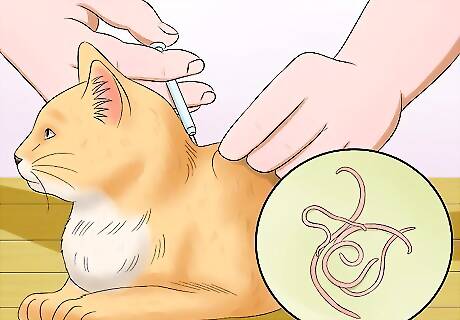
Deworm your cat. Worms can cause weight loss as well as other serious problems in cats, so ask your cat's veterinarian about deworming your cat as part of your efforts to deal with your cat's malnutrition. Your veterinarian may require a stool sample from your cat to determine whether or not he or she has worms. Newborn kittens need to be wormed starting at two weeks of age and then continuing every two weeks until the kitten is eight weeks old. Kittens over eight weeks need to be wormed every month until they reach six months of age. Cats over six months old need to be wormed once every one to three months.
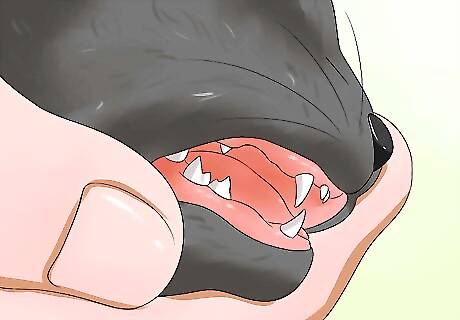
Check your cat's teeth. Dental issues may also interfere with your cat's ability to chew food, so you may want to inspect the malnourished cat's teeth to check for problems. If you notice any problems, then you should take your cat to see a veterinarian. Some things to watch for include: pawing at the mouth bleeding from the mouth bad breath drooling flinching or crying in pain if you touch your cat's mouth

Make sure that your cat has easy access to food bowls. Older cats may have a hard time getting to food dishes that are placed in inconvenient places, such as in the basement or on a counter top. Make sure that you place your cat's food and water dishes in locations that will be easy for him or her to access. You may even consider placing a food and water dish upstairs and another food and water dish downstairs.
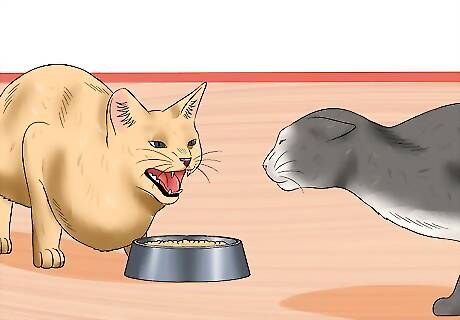
Watch for bullying behaviors. Cats sometimes develop food guarding behaviors that may lead them to chase other cats away from the food bowls. Watch to see if any of your cats are bullying the malnourished cat. If so, then you may need to provide a separate space for the malnourished cat to eat in peace. For example, you could feed the malnourished cat in your bedroom with the door closed so that the bullying cat cannot bother the malnourished cat. Another option is to provide additional food bowls in multiple locations of your house.
Changing Your Malnourished Cat's Diet
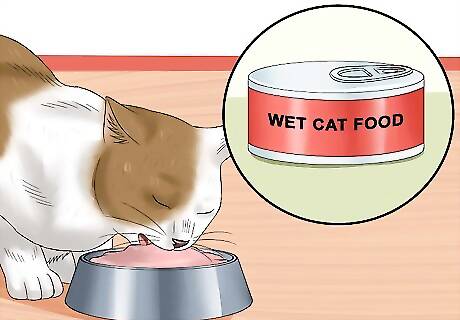
Select a commercial wet food diet. This is applicable if you are currently feeding your cat a homemade diet. Your intentions are likely good for preparing your cat's food at home, but the homemade diet may be low in essential vitamins and minerals. In addition, if you use vegetable oil to cook the foods, you could be giving your cat food that she will not want to eat anyway—cats tend not to like vegetable oil. Refusing to eat the food you prepare for her could be causing your cat's malnutrition. Commercial diets are formulated to contain the proper amounts of essential vitamins and minerals, making them a good choice for your cat. If you choose to continue feeding your cat a homemade diet, consult with your veterinarian or a veterinary nutritionist. These experts can formulate recipes for you that will meet your cat's nutritional needs and address her nutritional deficiencies.
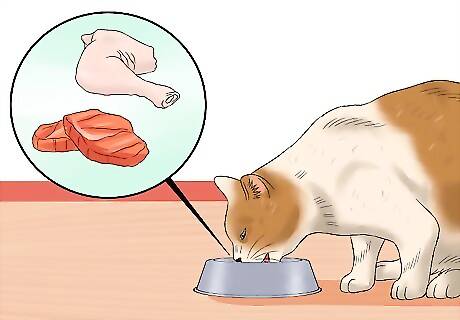
Feed your cat a meat-based diet. Since cats are carnivores, it is essential that your cat eat meat. Meat provides your cat with protein and vitamin A that are necessary for her overall health. Commercial wet cat foods are good sources of meat for your cat. Even if you are a vegetarian or vegan, your cat's health will suffer if you feed her a meatless diet as well. In addition to protein and vitamin A deficiencies, she will also become deficient in a nutrient called taurine, which can lead to blindness and heart failure. Vegetarian/vegan diets for cats are also deficient in such nutrients as calcium and vitamin E.

Decrease your cat's intake of fish and liver. Cats love fish and liver, but these two foods do not necessarily love cats back. If your cat eats a lot of fish, she could develop a thiamine deficiency. Too much liver can lead to vitamin toxicities. Fish contains an enzyme called thiaminase that breaks down thiamine, leading to a deficiency of this important nutrient. If fish and liver have become regular staples of your cat's diet, consider limiting her intake of these foods to the occasional scrumptious treat.

Reduce how much tuna your cat eats. Tuna is another food that cats love. Unfortunately, too much tuna can lead to vitamin E deficiency and eventual malnutrition. This vitamin E deficiency can cause a disease called steatitis ('yellow fat disease'). Limit your cat's tuna intake to the occasional treat. Your cat may have gotten accustomed to the taste of tuna if you have fed it to her regularly. She probably won't be too pleased with eating less of it, but the reduced amount will help bring her out of the malnutrition stage.
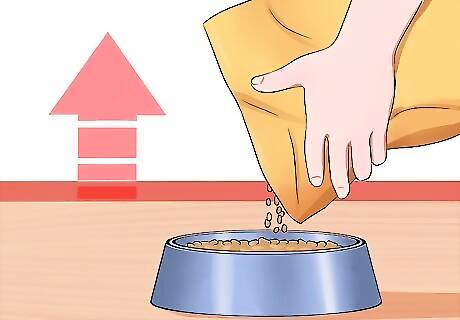
Add food gradually. It is important to increase your cat's food intake gradually rather than feeding him lots of extra food all at once. If you want your cat to eat more food, then try adding a little extra food to his or her food bowl every day. Otherwise, the cat may end up getting sick and may become more malnourished as a result.
Treating Malnutrition-Related Health Conditions in Your Cat
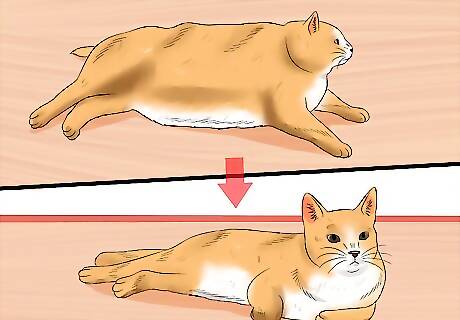
Reduce your cat's body weight. If your cat is a carrying a few extra pounds, it would be a good idea to get her down to an ideal body weight, which is 8 to 10 pounds (3.6 to 4.5 kg). Obesity is among the most common causes of malnutrition in cats, so your cat's extra pounds could be contributing to her malnutrition. Weight loss in cats should be done gradually to prevent hepatic lipidosis. Talk with your veterinarian to develop a weight loss plan that includes reduced caloric intake and increased physical activity for your cat.

Treat your cat's hepatic lipidosis. In addition to rapid weight loss, prolonged malnutrition can lead to hepatic lipidosis. If your cat remains deficient in nutrients for too long, her internal organs, particularly her liver, can start to fail. When your cat's liver can no longer function, it begins to accumulate excess fat. Hepatic lipidosis can start develop as soon as one to two days after your cat has stopped eating. Take your cat to the veterinarian for treatment if your cat has not eaten for 24 hours. Symptoms of hepatic lipidosis include constipation, depression, and yellowing of the eyes. Treatment for hepatic lipidosis primarily involves dietary treatment: immediate replenishment of protein and various dietary supplements (e.g., taurine, vitamin E). Depending on the severity of the disease, your cat may need intensive veterinary treatment that involves force feeding through a tube placed down her esophagus, or a syringe.

Manage your cat's diabetes. Diabetes, when left untreated, can lead to a loss of appetite and eventual malnutrition in cats. If your veterinarian has diagnosed your cat with diabetes, make sure that you are following the treatment recommendations to effectively manage the diabetes and prevent malnutrition. Treatment for feline diabetes typically includes insulin injections and dietary changes (e.g., high-fiber and high-complex carbohydrate diet, scheduled feedings).













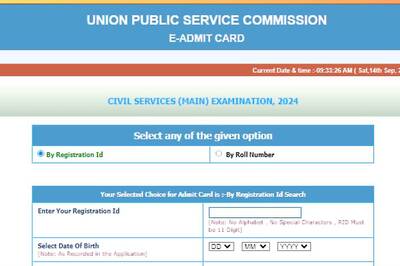



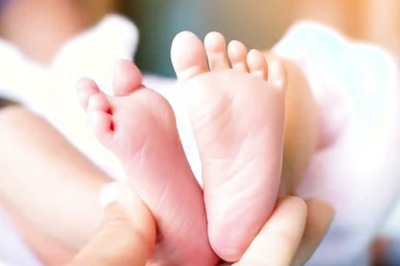
Comments
0 comment